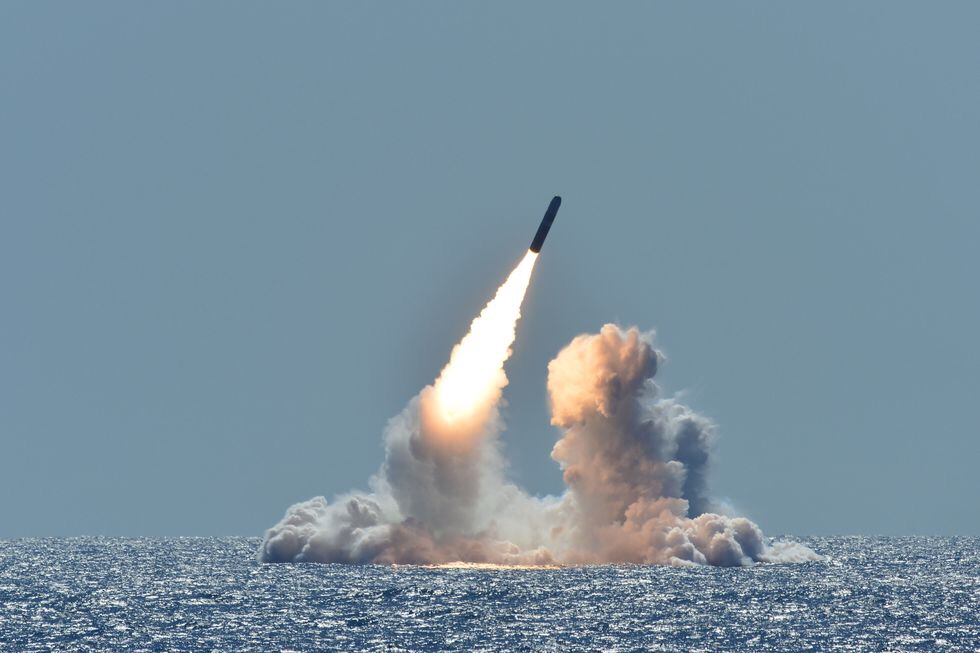 U.S. Submarines Will Soon Carry Tactical Nuclear Weapons
U.S. Submarines Will Soon Carry Tactical Nuclear WeaponsCritics argue it’s a bad idea. Here's why.
Kyle Mizokami
Jul 26, 2018
The U.S. Navy’s fleet of ballistic missile submarines will soon carry tactical nuclear weapons, as Congress prepares to fund development of a new, low-yield nuclear warhead. The submarines, which form a functional invulnerable retaliatory force in case of surprise nuclear attack, will soon be able to launch missiles with less powerful tactical nuclear weapons. Not everyone is sold on the new weapon, which critics charge is unnecessary and could lower the threshold for nuclear war.
The U.S. Navy’s fourteen Ohio nuclear ballistic missile submarines provide a powerful deterrent to surprise nuclear attack. The submarines embark on lengthy deterrence patrols, hiding in the world’s oceans, effectively a moving cache of nuclear weapons that an adversary would find extremely difficult to destroy. As long as the subs are at sea, the U.S. maintains the ability to counter a surprise attack with a counterattack of its own.
Every four years, the sitting presidential administration conducts a review of U.S. nuclear forces. The 2018 Nuclear Posture Review, commissioned by President Trump, calls for replacing some of the existing nuclear warheads on the Ohio-class submarines with low-yield warheads. The goal is to have the ability to strike urgent, time sensitive targets virtually any place on Earth.
Each Ohio submarine carries twenty Trident D-5 missiles, and each missile is outfitted with an unknown number of W76-1 nuclear warheads. (The U.S. keeps the number of submarines at sea and warheads per submarine intentionally ambiguous, although we know Washington has pledged to never deploy more than 240 missiles at sea at any one time.) Now it appears at least some of those warheads will be replaced with the W76-2, which has a much smaller explosive yield.
The Administration argues that the U.S. may need to strike quickly strike targets with tactical nuclear weapons. An example might be a nuclear-armed missile sitting on a North Korean missile launch pad. Most tactical nukes are aircraft delivered bombs, and could take the better part of a day to ready and then reach their target. A tactical nuke delivered by a submarine-launched ballistic missile, on the other hand, could be delivered in less than an hour.

The training version of a B61 bomb.
Wikimedia Commons
How small a warhead yield are we talking about? That’s a good question. The existing W76-1 warhead has an explosive yield of 100 kilotons (for reference, the Hiroshima bomb was 16 kilotons.) The B61-12 tactical nuclear gravity bomb has a “dial-a-yield” mechanism that allows for yields of .3 (or just 300 tons of TNT), 1.5, 10, and 50 kilotons. The W76-2 would likely have a yield similar to the B61-12’s low end.
Critics, on the other hand, believe the new warhead is unnecessary and dangerous. They believe that the W76-2 is a solution in search of a problem, noting that sudden “bolt from the blue” crisis that suddenly demands a tactical nuclear weapon placed on a target in less than an hour is very unlikely. They believe that existing tactical nuclear weapons would be forward deployed near a potential crisis, making them available more quickly than commonly believed.
The new weapon also comes under fire for being needlessly escalatory. The United States has an overwhelming amount of conventional firepower, which critics of the new weapon argue can just as effectively destroy a time-sensitive threat. Using a tactical nuclear weapon could be just plain unnecessary. Furthermore, unless nukes have already been used in the conflict, the use of the new warhead would cause the the United States to cross the nuclear threshold first, inviting adversaries to use their own nukes against U.S. and allied forces.
Congress is preparing to fund development of the W76-2, to a tune of $65 million. The process won’t involve building any new weapons--instead the government will convert existing W76-1 warheads into low yield versions. Meanwhile, the controversy as to whether the weapons are needed and ultimately dangerous to U.S. national security rages on.
No comments:
Post a Comment